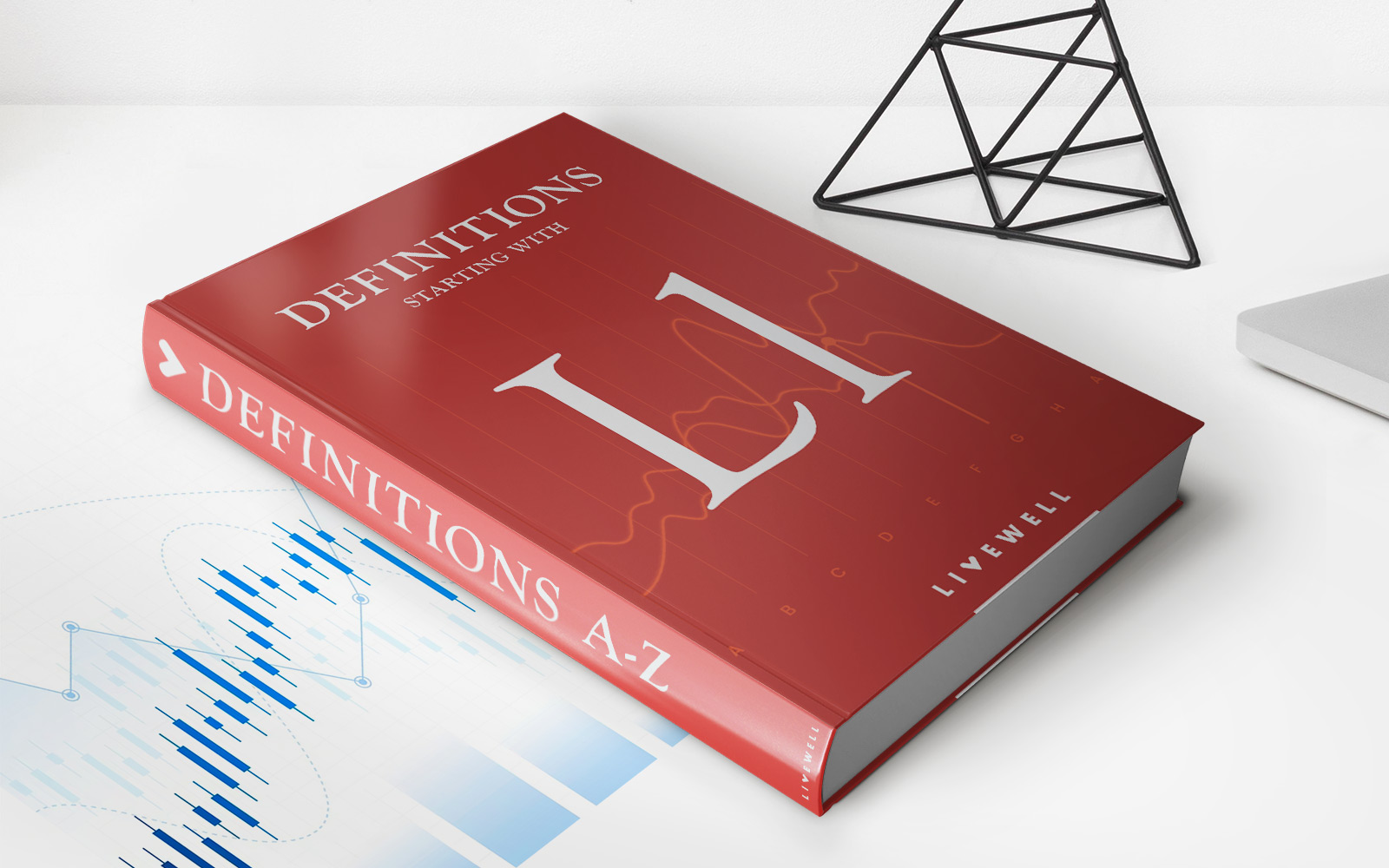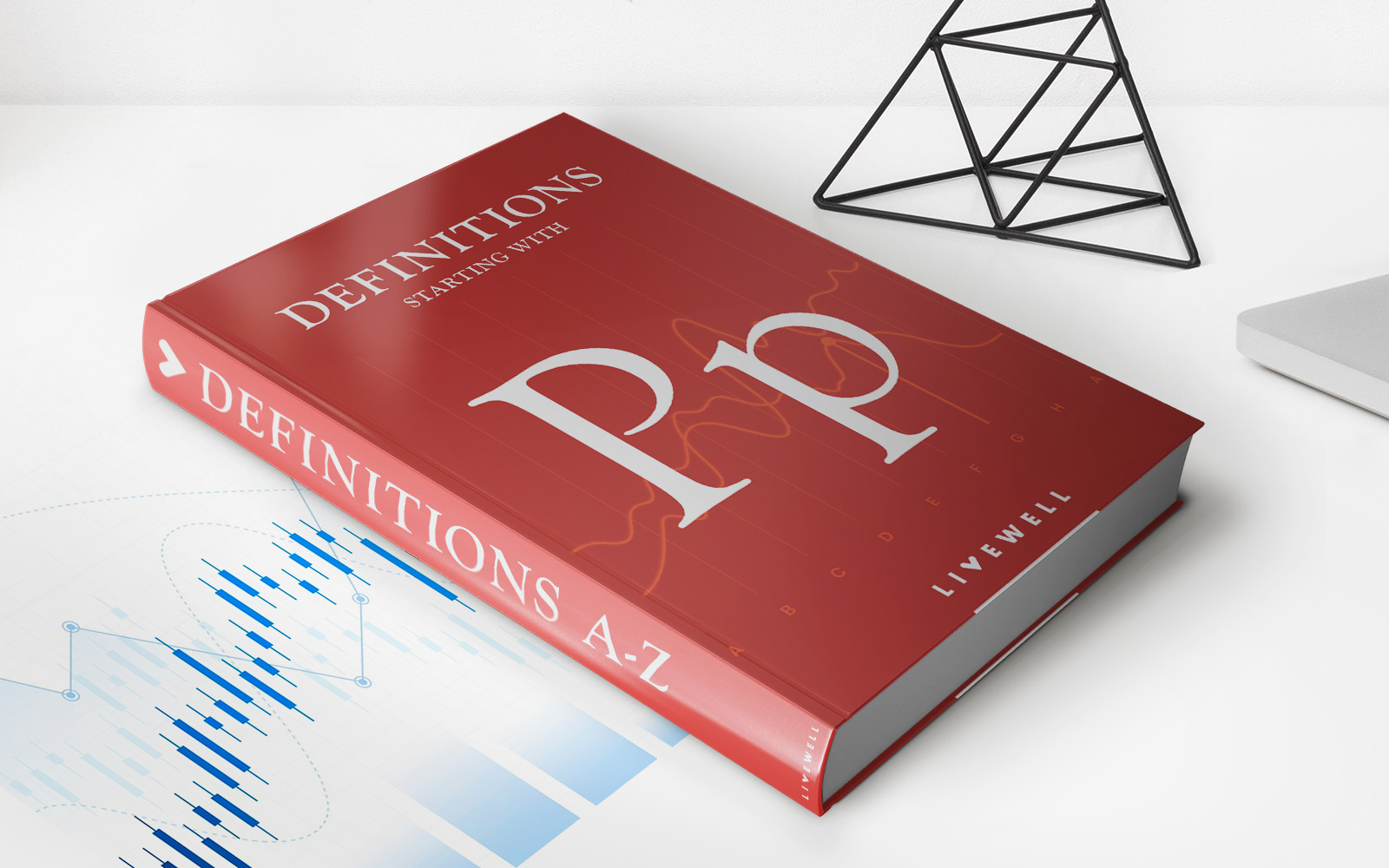

Finance
What Does Capital Structure Mean
Published: December 24, 2023
Understand the concept of capital structure in finance and its significance for businesses. Learn how capital structure affects financial decisions and risk management.
(Many of the links in this article redirect to a specific reviewed product. Your purchase of these products through affiliate links helps to generate commission for LiveWell, at no extra cost. Learn more)
Table of Contents
Introduction
Capital structure is a fundamental concept in finance that refers to the way a company finances its operations through various sources of capital, including debt, equity, and retained earnings. It is the composition of the company’s liabilities and equity that determines its financial health and stability.
Understanding capital structure is crucial for businesses, investors, and financial analysts. It not only affects the company’s ability to raise funds but also has a significant impact on its profitability, risk level, and overall value.
The capital structure of a company determines the proportion of debt and equity it utilizes to finance its operations. Debt represents borrowed funds that a company must repay with interest, while equity consists of the ownership interest in the company held by shareholders. Companies can also use retained earnings, which are profits reinvested in the business, as a source of capital.
By carefully managing their capital structure, companies can optimize their cost of capital, mitigate risk, and maximize shareholder value. Achieving the right balance between debt and equity is essential, as too much debt can increase the company’s risk of default, while too much equity can dilute shareholder ownership and earnings.
This article will delve into the definition of capital structure, explore its key components, discuss its importance, and examine the factors that influence it. We will also explore examples of different capital structures, weigh the advantages and disadvantages of each, and provide insights into evaluating and optimizing capital structure for businesses.
Definition of Capital Structure
Capital structure is the combination of different sources of funding that a company uses to finance its operations and investments. It represents the mix of debt, equity, and retained earnings that contribute to the total capital employed by the company.
Debt, or borrowed funds, is one of the primary components of capital structure. Companies raise debt by issuing bonds, taking out loans from financial institutions, or other forms of borrowing. Debt holders have a contractual right to receive interest and the principal amount on a specified schedule.
Equity represents the ownership interest in the company held by shareholders. It is raised through the sale of company shares, either in the form of common stock or preferred stock. Equity holders have a claim on the company’s assets and earnings after all debts and other obligations have been paid.
Retained earnings, also known as accumulated profits, are another component of capital structure. They are the portion of a company’s profits that have been reinvested in the business rather than being paid out as dividends. Retained earnings can be used to fund growth initiatives, acquisitions, or reduce debt.
The capital structure decision is crucial for companies as it determines the risk and return profile of the business. A company with a higher proportion of debt in its capital structure will have higher financial leverage, which can amplify profits during periods of growth but also expose the company to greater financial risk and potential bankruptcy in economic downturns.
On the other hand, a company with a higher proportion of equity in its capital structure will have a lower risk of bankruptcy but may face higher financing costs due to the dilution of ownership and potential impact on earnings per share.
The optimal capital structure is a balance that maximizes the company’s value by minimizing the cost of capital while maintaining an acceptable level of risk. This optimal mix varies depending on factors such as industry dynamics, business risk, profitability, tax environment, and growth prospects.
It is important to note that capital structure decisions can be influenced by various factors, including industry norms, prevailing market conditions, company policies, and management’s risk appetite. Therefore, capital structure is not a one-size-fits-all concept, and what works for one company may not work for another.
Key Components of Capital Structure
The capital structure of a company is made up of several key components that contribute to its overall financial framework. Understanding these components is essential for analyzing and managing a company’s capital structure effectively. The key components of capital structure include:
- Debt: Debt is a significant component of capital structure and represents borrowed funds that a company must repay with interest. It includes various forms of loans, bonds, and other forms of debt financing. Debt holders have a contractual right to receive interest payments and principal repayment according to the agreed terms.
- Equity: Equity refers to the ownership interest in the company held by shareholders. It is raised through the sale of company shares, either as common stock or preferred stock. Equity holders have a claim on the company’s assets and earnings after all debts and other obligations have been paid. They also have voting rights and may receive dividends.
- Retained Earnings: Retained earnings are the portion of a company’s profits that have been reinvested in the business instead of being distributed to shareholders as dividends. They are accumulated over time and can be used to fund growth initiatives or reduce debt. Retained earnings contribute to the equity component of the capital structure.
- Convertible Securities: Convertible securities are financial instruments that can be converted into a certain number of common shares. They combine features of both debt and equity, allowing holders to convert their securities into equity at a predetermined price. Convertible securities offer flexibility for both investors and issuers in terms of the capital structure.
- Preferred Stock: Preferred stock is a type of equity that has priority over common stock in terms of dividend payments and claims on assets in the event of liquidation. Preferred stockholders generally receive a fixed dividend rate and have limited voting rights compared to common stockholders.
The proportions in which these components are used in a company’s capital structure can vary depending on various factors like industry norms, financial health, risk tolerance, and growth objectives. A company can have different capital structures at different stages of its lifecycle, depending on its financing needs and strategic goals.
It is important for companies to strike the right balance between debt and equity in their capital structure. Too much reliance on debt can increase financial risk and interest expense, potentially leading to financial distress. On the other hand, too much equity can dilute ownership and earnings per share. Achieving an optimal capital structure is crucial for maximizing shareholder value and ensuring the long-term sustainability of the company.
Importance of Capital Structure
Capital structure plays a vital role in the financial health and success of a company. It has several important implications for the business, its stakeholders, and its overall value. The importance of capital structure can be understood through the following key points:
- Cost of Capital: Capital structure directly affects a company’s cost of capital, which is the cost of financing its operations. By having an optimal mix of debt and equity, a company can minimize its cost of capital and maximize its profitability. Debt is generally cheaper than equity as interest is tax-deductible, making debt financing more cost-effective for most companies. However, using too much debt can increase the risk and cost of borrowing.
- Financial Risk: The capital structure has a significant impact on the financial risk faced by a company. High levels of debt increase the risk of financial distress and potential bankruptcy, especially during economic downturns or when business operations face difficulties. On the other hand, relying too heavily on equity can dilute ownership and reduce earnings per share, impacting the company’s ability to attract investors and raise more funds.
- Flexibility: A well-structured capital base provides companies with greater flexibility in managing financial obligations and investing in growth opportunities. With the right mix of debt and equity, companies can have sufficient cash flow to meet debt payment obligations while also having funds available for expansion, research and development, acquisitions, or other strategic initiatives.
- Investor Perception: Capital structure impacts investor perception and confidence in a company. A company with a strong and balanced capital structure is often viewed as financially stable and capable of generating sustainable returns. This can attract a wider pool of investors and potentially lower the cost of raising additional capital in the future.
- Ownership and Control: The capital structure determines the ownership and control of a company. Equity holders have ownership rights and voting power in company decisions. Thus, the allocation of equity in the capital structure can impact the distribution of control among shareholders and influence the company’s governance structure.
It is important for companies to carefully evaluate and manage their capital structure to optimize their financial position and align it with their strategic goals. This involves conducting thorough analysis of their funding needs, current financial position, industry dynamics, and risk appetite. By maintaining an optimal capital structure, companies can enhance their financial performance, minimize risk, attract investors, and create long-term value for their shareholders.
Factors Affecting Capital Structure
The capital structure of a company is influenced by various factors that can impact the mix of debt and equity in its financing. These factors may vary based on the company’s industry, size, profitability, growth prospects, and risk tolerance. Understanding these factors is crucial for making informed decisions about capital structure. The key factors affecting capital structure include:
- Business Risk: The level of business risk faced by a company is an important consideration in determining its capital structure. Companies operating in more stable industries with steady cash flows and lower risk may opt for higher levels of debt to take advantage of the potential tax shield and lower cost of borrowing. Conversely, companies operating in cyclical or high-risk industries may choose to have a lower proportion of debt to reduce the risk of financial distress.
- Financial Performance: The financial performance of a company, including its profitability, cash flow generation, and liquidity, can influence its capital structure. Companies with strong financial performance and consistent earnings may be more attractive to debt providers and may have better access to debt financing options. On the other hand, companies with weak financial performance or unstable earnings may face challenges in obtaining debt financing and may have to rely more on equity.
- Growth Prospects: The growth prospects of a company are also significant factors in determining its capital structure. Companies with high growth potential may require significant investments in research and development, expansion, or acquisitions. Such companies may opt for a higher proportion of equity financing to fund their growth initiatives and minimize the financial burden of debt repayments.
- Tax Environment: The tax environment in which a company operates can influence its capital structure decisions. Interest payments on debt are often tax-deductible, creating a tax shield that reduces the effective cost of debt financing. As a result, companies operating in high-tax jurisdictions may be more inclined to utilize debt financing as a way to reduce their tax liabilities.
- Industry Norms: Industry norms and best practices can also impact capital structure decisions. Companies tend to align their capital structure with industry standards to remain competitive and maintain access to capital markets. Analyzing peer companies within the same industry can provide valuable insights into the suitable capital structure for a specific business.
- Cost of Capital: The cost of capital is a critical factor to consider when determining the capital structure. Companies must evaluate the cost of debt and equity financing options available to them and weigh the benefits and risks associated with each. Lower-cost debt may be preferred in situations where interest rates are favorable, and the company has a solid ability to service its debt obligations.
It is important to note that these factors are intertwined, and their impact on capital structure decisions will vary depending on the specific circumstances of each company. Evaluating these factors and understanding their implications can help companies establish an optimal capital structure that aligns with their financial goals and risk tolerance.
Optimal Capital Structure
The optimal capital structure refers to the ideal mix of debt, equity, and other sources of financing that maximizes a company’s value while minimizing its cost of capital and financial risk. Determining the optimal capital structure is crucial for businesses as it directly impacts their profitability, ability to raise funds, and overall financial health.
While there is no one-size-fits-all approach to finding the optimal capital structure, several factors need to be considered:
- Business and Financial Risk: The level of business risk and financial risk faced by a company should guide its capital structure decisions. Companies with stable cash flows, low risk of default, and predictable earnings may have a higher proportion of debt in their capital structure. Conversely, companies in volatile industries or with uncertain cash flows may opt for a more conservative capital structure with a greater proportion of equity.
- Cost of Capital: Another crucial factor is the cost of capital. Companies strive to minimize their overall cost of capital, as it affects their profitability and valuation. By carefully balancing the cost of debt and equity, companies can achieve a lower weighted average cost of capital (WACC). This involves analyzing the interest rates, tax implications, and return expectations associated with debt and equity financing options.
- Growth Prospects and Investment Needs: Companies with high growth prospects and significant investment needs may prefer a capital structure that allows them to fund their expansion plans efficiently. Such companies may opt for a higher proportion of equity or a mix of debt and equity to raise funds for their growth initiatives without taking on excessive financial risk.
- Industry Norms and Market Perception: Industry norms and market perception can also influence capital structure decisions. Companies often align their capital structure with the industry average to maintain competitiveness and access to capital markets. Deviating significantly from industry norms may affect investor perception and hinder the company’s ability to raise funds.
- Flexibility and Liquidity: The degree of flexibility and liquidity required by a company can impact its capital structure. Having a mix of debt and equity can provide companies with greater financial flexibility, allowing them to adapt to changing business conditions, pursue strategic initiatives, and meet financial obligations.
It is important for companies to regularly evaluate and adjust their capital structure based on changing circumstances. As a company evolves and its financial position changes, the optimal capital structure may also need to be adjusted to ensure it aligns with the company’s goals and risk tolerance.
It is worth mentioning that finding the optimal capital structure is not a one-time decision. It requires ongoing analysis, monitoring, and adjustment as the company’s financial and market conditions change. By striving for an optimal capital structure, companies can position themselves for long-term success, maximize shareholder value, and enhance their ability to navigate challenges in the ever-evolving business landscape.
Examples of Capital Structure
Capital structure can vary significantly across different companies and industries. While there is no universal formula for the ideal capital structure, looking at various examples can provide insights into how companies allocate their financing sources. Here are a few examples:
- Conservative Capital Structure: Some companies opt for a conservative capital structure with a higher proportion of equity and a lower level of debt. This approach minimizes financial risk and provides a cushion against economic downturns. Companies in stable and mature industries, such as utilities or consumer staples, often adopt this capital structure to maintain stability and attract risk-averse investors.
- Debt-Heavy Capital Structure: On the other end of the spectrum, certain companies may have a more debt-heavy capital structure. This is common in industries such as telecommunications, where companies require significant investments in infrastructure. The high cash flow predictability and extensive assets in these industries make it possible for companies to service their debt obligations comfortably.
- Capital Structure with Convertible Securities: Some companies utilize convertible securities, such as convertible bonds or convertible preferred stock, in their capital structure. These securities provide flexibility by combining elements of debt and equity financing. Convertible securities allow companies to benefit from the lower cost of debt while giving investors the option to convert them into equity.
- Capital Structure for Startups: Startups often have unique capital structures due to their high-growth focus and limited operating history. They may rely heavily on equity financing from angel investors, venture capitalists, or crowdfunding platforms to fund their operations and fuel their expansion. As startups evolve and generate sustainable cash flows, their capital structure may change to incorporate debt financing or alternative sources of capital.
- Leveraged Capital Structure: Some companies intentionally adopt a leveraged capital structure, characterized by a significant amount of debt. Leveraged buyouts or companies undergoing restructuring may utilize this capital structure to finance acquisitions or turnaround efforts. The higher levels of debt can amplify returns during periods of growth but also increase financial risk.
It is important to note that each company’s capital structure is unique and influenced by various factors, including industry dynamics, financial position, growth prospects, and risk tolerance. Companies must carefully analyze their specific circumstances and align their capital structure with their strategic objectives to maximize value for their stakeholders.
Advantages and Disadvantages of Different Capital Structures
Different capital structures have their own advantages and disadvantages, which can impact a company’s financial position, risk profile, and overall value. Understanding these pros and cons is crucial for companies when determining the most suitable capital structure for their specific needs. Here are some advantages and disadvantages associated with different capital structures:
- Debt Financing:
- Advantages:
- Interest on debt is tax-deductible, reducing the company’s tax liability.
- Debt allows for leverage, which can amplify returns on equity for shareholders.
- Debt financing can provide fixed payment obligations, making cash flow management more predictable.
- Debt holders do not have voting rights, allowing existing shareholders to retain control of the company.
- Disadvantages:
- High levels of debt increase financial risk and the company’s susceptibility to economic downturns.
- Debt requires regular interest payments, putting pressure on cash flow when the company faces financial challenges.
- Debt holders have priority over equity holders in the event of liquidation, potentially leaving little to no value for equity shareholders.
- Excessive reliance on debt can negatively impact the company’s credit rating and ability to access future financing.
- Equity Financing:
- Advantages:
- Equity does not require regular interest payments, easing cash flow obligations.
- Equity financing does not create a fixed repayment obligation, providing flexibility during financial challenges.
- Equity holders have the potential to earn higher returns through capital appreciation and dividends.
- Equity financing can enhance the company’s creditworthiness and ability to attract additional investors.
- Disadvantages:
- Equity financing can dilute ownership and earnings per share, impacting existing shareholders.
- Equity holders have voting rights, which may result in a loss of control for existing shareholders.
- Raising equity capital can be time-consuming and costly due to regulatory requirements and investor demands.
- Issuing additional equity can lead to a loss of strategic flexibility and increase the company’s cost of capital.
- Hybrid Financing (Debt and Equity Mix):
- Advantages:
- Hybrid financing combines the benefits of debt (tax advantages) and equity (flexibility and potential capital appreciation).
- Convertible securities offer flexibility by allowing holders to convert them into equity when the company’s value increases.
- Hybrid financing can provide a more balanced capital structure, minimizing financial risk while still benefiting from tax advantages.
- Convertible securities may appeal to investors seeking potential equity gains with the option of fixed income in the interim.
- Disadvantages:
- Convertible securities can cause dilution for existing shareholders if they are converted into equity.
- Hybrid financing may add complexity to the capital structure, requiring careful management and communication with investors.
- The company may face challenges in gauging investor interest and setting the conversion price for convertible securities.
- Balancing debt and equity components in the capital structure may involve trade-offs and can be challenging to optimize.
It is important for companies to carefully weigh the advantages and disadvantages of each capital structure option based on their specific circumstances and strategic goals. Striking the right balance is crucial for optimizing costs, managing risks, and maximizing long-term value for shareholders.
Evaluating Capital Structure
Evaluating capital structure is a critical process for companies to assess the effectiveness of their financing decisions and determine if adjustments are needed. By analyzing various factors and conducting financial assessments, companies can gain valuable insights into the suitability and impact of their current capital structure. Here are key steps for evaluating capital structure:
- Financial Ratio Analysis: Companies can start by analyzing financial ratios that are indicative of their capital structure, such as debt-to-equity ratio, leverage ratio, interest coverage ratio, and return on equity. These ratios provide insights into the company’s financial health, level of indebtedness, and ability to service its debt obligations.
- Cost of Capital Assessment: Evaluating the cost of capital is crucial to understanding the overall impact of the capital structure. Companies should analyze the weighted average cost of capital (WACC) by considering both the cost of debt and the cost of equity. Comparing the WACC to the company’s return on investment can help determine if the capital structure is efficient in generating returns.
- Risk Analysis: Assessing the risk associated with the current capital structure is essential. Companies should consider factors such as industry-specific risks, economic conditions, and potential future financial challenges. Stress testing the capital structure against various scenarios can help determine its resilience and ability to withstand adverse conditions.
- Comparative Analysis: Conducting a comparative analysis against peer companies can provide valuable insights. Evaluating the capital structures of competitors in the same industry can help identify trends, understand competitive advantages, and benchmark against industry norms. It is important to account for differences in company size, business model, and financial goals when comparing capital structures.
- Strategic Alignment: Companies should evaluate if their current capital structure aligns with their strategic goals. Considerations include future growth opportunities, acquisitions, new projects, and potential changes in business strategy. A capital structure that supports these strategic initiatives can provide the flexibility and financial capacity needed for long-term success.
Based on the evaluation, companies may identify areas for improvement or potential adjustments to their capital structure. This might involve refinancing existing debt, raising additional equity, or implementing hybrid financing options. It is essential to carefully consider the potential benefits, costs, and risks associated with any changes to the capital structure.
Evaluating the capital structure should be an ongoing process as the business environment and company dynamics evolve over time. Regularly reviewing and adjusting the capital structure ensures that it remains aligned with the company’s objectives, financial performance, and risk management strategy.
Conclusion
Capital structure is a fundamental aspect of financial management that determines how a company finances its operations and investments. Finding the optimal capital structure is crucial for businesses as it directly impacts their cost of capital, risk profile, and financial performance. By striking the right balance between debt and equity, companies can maximize shareholder value, attract investors, and ensure long-term sustainability.
Throughout this article, we have explored the definition of capital structure and its key components, including debt, equity, and retained earnings. We have discussed the factors that influence capital structure decisions, such as business risk, growth prospects, industry norms, and tax environment. Additionally, we have examined the advantages and disadvantages associated with different capital structures, including debt-heavy, equity-heavy, and hybrid financing approaches.
Furthermore, we have highlighted the importance of evaluating capital structure through financial ratio analysis, cost of capital assessment, risk analysis, comparative analysis, and strategic alignment. Regular evaluation of the capital structure enables companies to identify areas for improvement, optimize their debt-equity mix, and align with their strategic goals.
It is crucial for companies to consider their unique circumstances, financial objectives, and risk tolerance when determining the optimal capital structure. There is no one-size-fits-all solution, as the capital structure must be tailored to the specific needs and characteristics of each company. Ongoing monitoring and adjustment of the capital structure are essential to ensure it remains aligned with changing business conditions and financial goals.
In conclusion, capital structure plays a vital role in shaping a company’s financial health, risk profile, and value creation potential. By carefully managing and optimizing the capital structure, companies can enhance their ability to raise funds, minimize financial risk, and maximize shareholder value, ultimately setting themselves up for long-term success in the dynamic and competitive business landscape.














